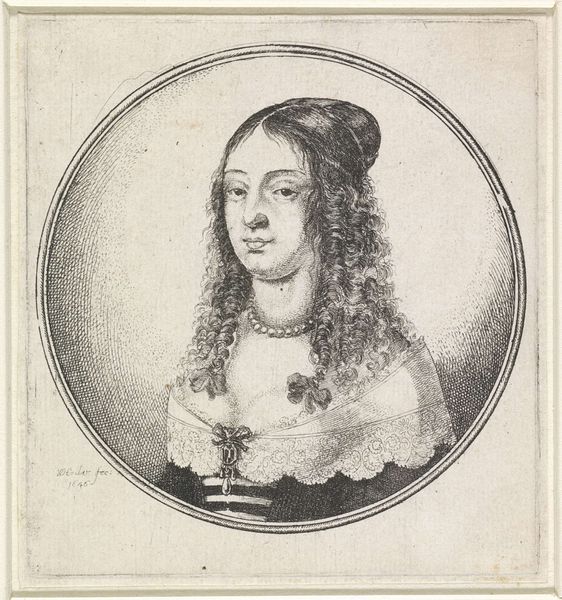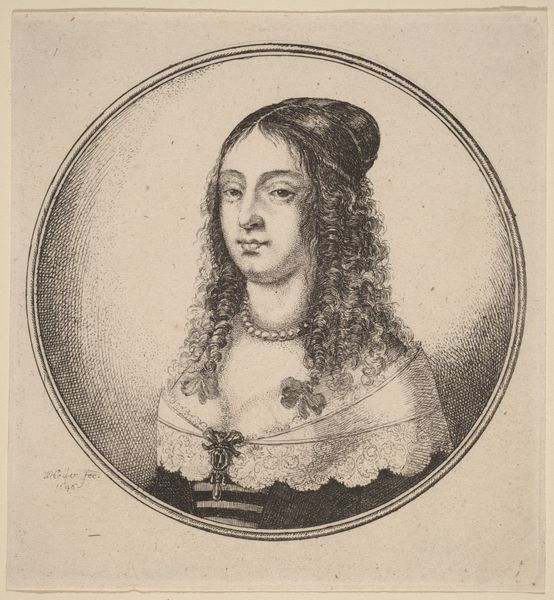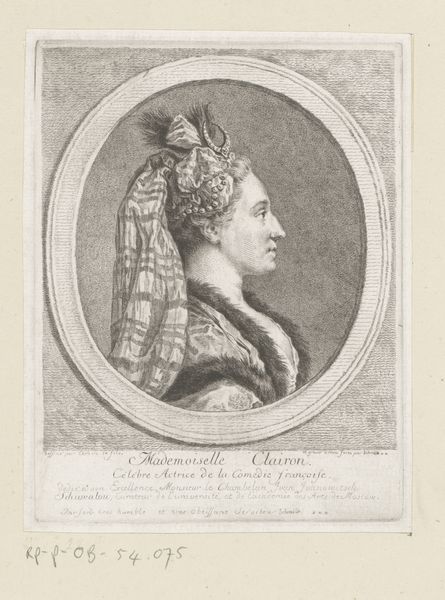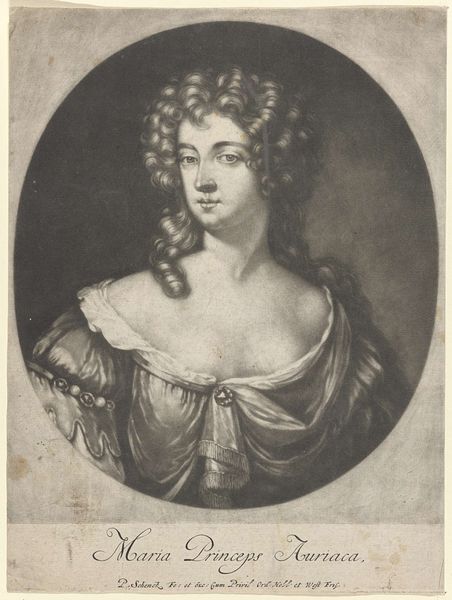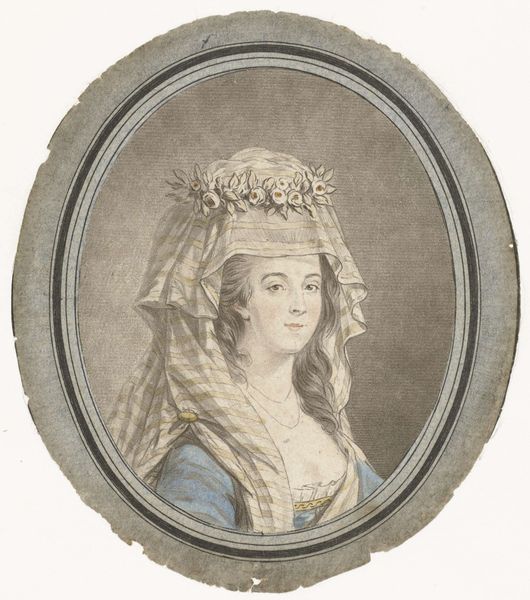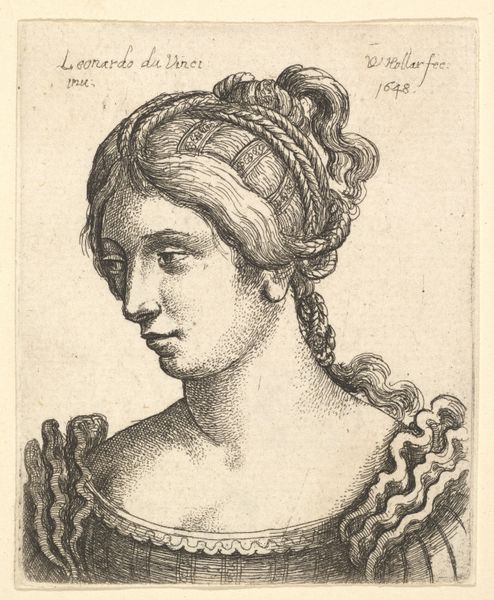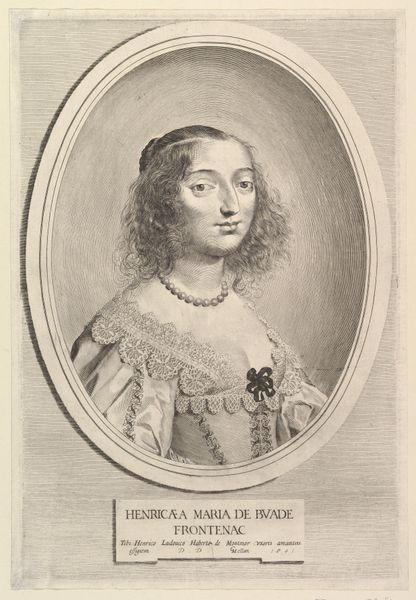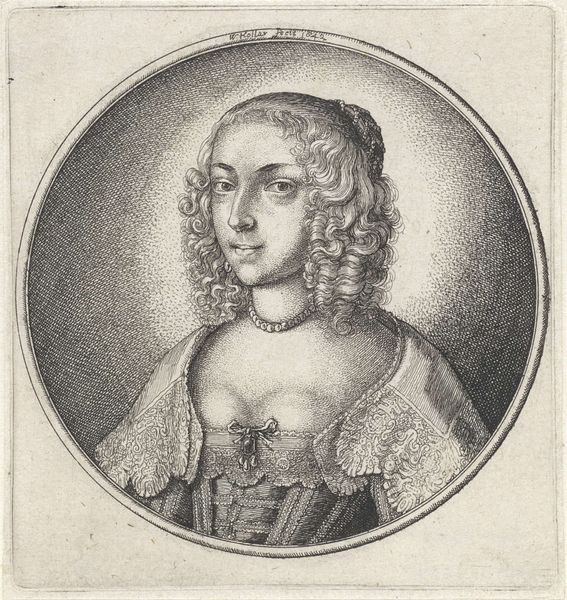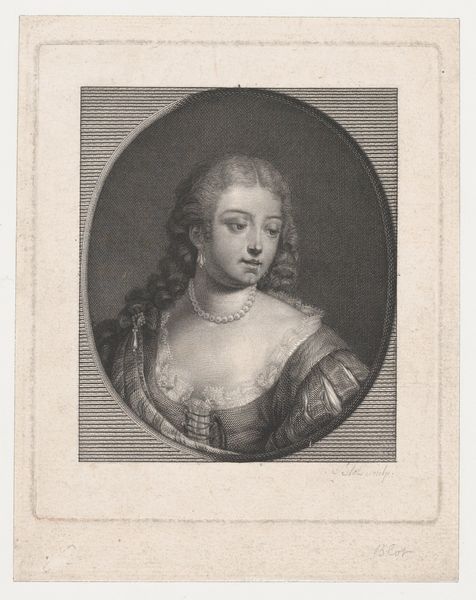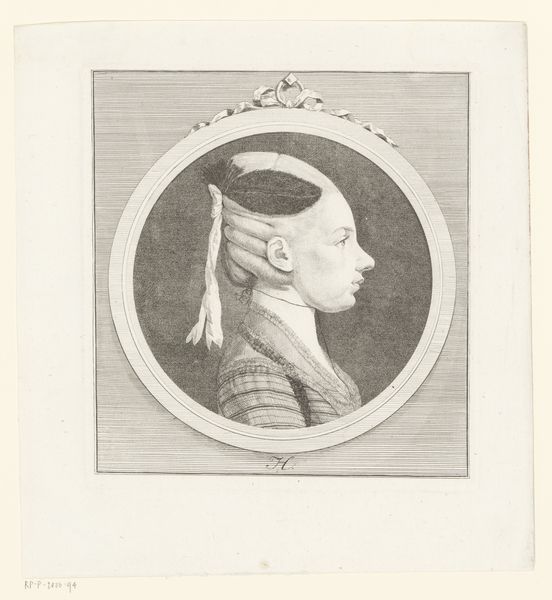
Woman with houpette on forehead turned to left 1643
0:00
0:00
drawing, print, engraving
#
portrait
#
drawing
# print
#
old engraving style
#
portrait drawing
#
engraving
Dimensions: Plate: 4 1/16 × 3 11/16 in. (10.3 × 9.4 cm) Sheet: 4 1/4 x 3 11/16 in. (10.8 x 9.4 cm)
Copyright: Public Domain
Curator: The sitter’s expression is immediately captivating; a certain restraint emanates from her gaze. Editor: Restraint, yes, but I see opulence. Look at the detailed rendering of her elaborate headwear and lacy garments. What’s the context for its production? Curator: This is Wenceslaus Hollar's engraving, “Woman with houpette on forehead turned to left,” created in 1643. Hollar was a prolific printmaker known for his detailed depictions of clothing and social customs of his time. This print is a beautiful example of that. Editor: The textures are incredible; the almost photorealistic hair next to the woven bodice... it’s compelling. I’m curious about the labor that went into not only the subject’s garments, but the process of the printmaking itself. Curator: The use of line is really striking. Notice how Hollar employs varied densities to create tonal variations. This print is really defined by his manipulation of the line. The stippling in the background, which lends depth and visual contrast, is a fine detail too. Editor: And thinking about those lines… each one etched by hand. What kind of social commentary might we interpret from Hollar meticulously rendering a wealthy woman’s adornments at such painstaking lengths? Is it reverence, a reflection of societal values, or something else? What type of consumer was Hollar appealing to? Curator: The print certainly immortalizes a very specific fashion of the time. In its intricate composition, the houpette becomes an object worthy of attention, wouldn’t you agree? The overall design—the circular frame—invites us to examine every part of the subject’s features and attire with equal care. Editor: I would only add to this, perhaps, to consider how prints such as these had value as methods of dissemination. We cannot overlook the socio-economic position and artistic practice embedded within its materials and production methods. Curator: Yes, these different vantage points can significantly deepen our understanding. Thank you, that was indeed thought-provoking. Editor: And likewise for your insights on Hollar’s rendering and composition. Thank you.
Comments
No comments
Be the first to comment and join the conversation on the ultimate creative platform.
